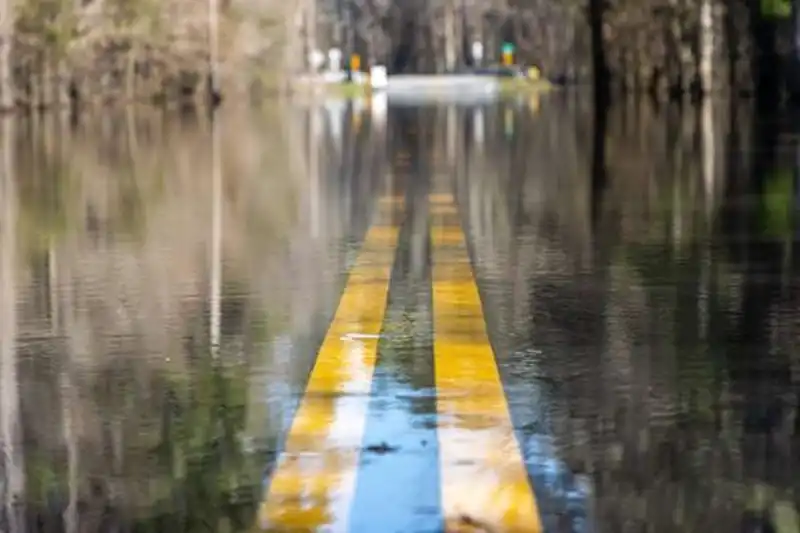Floods have many causes and can occur anywhere in the country, but here are some of the most common events that lead to flooding:
- Storm surges, in hurricane-prone areas.
- Flash flooding, caused by periods of intense rainfall.
- Mudslides, caused by long, heavy rain periods on a hill or mountainside.
- Snowmelt, caused by the still-frozen ground unable to absorb excess water.
- Ice jams, which are formed when an ice chunk flowing in a river or stream blocks, dams, or narrows passageways, causing overflow.
- Urban development, such as new construction and/or ground paving, which alters the topography and doesn’t allow water to drain properly.
National Flood Insurance Program (NFIP)
A general insurance policy will not cover flood damage. Flood insurance is only available through the National Flood Insurance Program (NFIP). The NFIP covers the types of floods discussed above, though it is important to note it does not cover landslides, even if they are caused by heavy rain.
Flood insurance is backed by the government but sold through private insurers.
NFIP Coverage: Who Should Buy It?
There are two main flood hazard levels and several subcategories that the NFIP uses to categorize a business’s flooding risk and to determine premiums.
Moderate-to-low-risk buildings, which are in zones B, C, and X. This includes the following:
- Areas outside of the one percent annual chance floodplain.
- Areas of less than one percent annual chance of sheet-flow flooding where average depths are less than one foot.
- Areas of less than one percent annual chance stream flooding where the contributing drainage area is less than one square mile.
- Areas protected by levees.
High-risk buildings, which are zones A and V.
- Zone A buildings are within a certain floodplain distance from a river, lake, or stream.
- Zone V buildings are within a certain distance from the coast and exposed to natural disasters associated with the ocean.
If your commercial property is in a high-risk flood area and you have a mortgage from a federally regulated or insured lender, then you are required to purchase a flood insurance policy. However, the NFIP reports that one-third of all annual claims paid are for policies in low-risk communities. Because new land development can increase flood risk by changing natural runoff patterns, it is a good idea to purchase flood insurance even if you are not near a large body of water.
Associated Costs
Flood insurance premiums are based on several factors, which could raise or lower the amount your business would have to pay. These factors include the following:
- Building’s age, height, and occupancy.
- Your company’s location within the building.
- The location of the lowest floor in relation to the elevation requirement on the flood map (only applicable to newer buildings).
- The deductible you choose and the amount of coverage obtained for building and contents.
If you are in a low-risk area, you are eligible for the Preferred Risk Policy, which would cover your building as well as its contents for just a few hundred dollars a year. Even though federal disaster assistance is available to flood victims, it is usually in the form of a loan that must be paid back with interest. For example, if you received a $50,000 federal loan at 4 percent interest, your monthly payment would be around $240; however, by comparison, a $100,000 flood insurance premium could cost your company less than $100 per month.
What is Covered
There are two types of commercial building flood insurance coverage, and you can opt to buy one or both.
- Commercial contents covers inventory, merchandise, machinery, and any other contents your business has, up to $500,000.
- Commercial building covers your business building and its contents, up to $500,000 each. If your company does not own the building, NFIP will cover up to 10 percent of improvements you have made to the space.
In addition to these two types of building coverage, the NFIP will also cover debris removal during the cleanup process. If your business takes steps to protect against or prevent flood damage, you may be eligible for lower rates. For more information on how to protect against the risk of flood damage to your business, visit https://disastersafety.org/flood/protect-your-business-from-floods/
If you have further questions about flood insurance coverage and its provisions, we are here to help. Contact your Leavitt Group insurance advisor to find out how you can extend your coverage to keep your business safe and running.
For a complete list of subcategories and to map out the zone in which your business is located, visit www.floodsmart.gov, the official website of the NFIP.




